Abstract
The hearing of 111 perinatal intensive care survivors of birthweights 1500 g or less was assessed at a mean age of 6 1/2 years (range 4--12). These 111 infants included 86% of the long-term survivors of this birthweight cared for in the newborn unit of University College Hospital, London, during the years 1966--72. All these infants were nursed in commercially available incubators for periods ranging from 2 to 80 days (mean 37) in which the mean noise threshold was 65 dB. Ten (9%) had sensory neural nearing losses, one (1%) infant had a congenital conductive hearing loss, and 21 (19%) infants had exudative otitis media with a mean loss of 25 dB. Apnoeic attacks in the neotal period were the most significant predictors of hearing loss in these infants (P less than 0.05) and an indirect serum filirubin level of at least 170 micromol/l (10 mg/100 ml) in the neonatal period had an additive effect (P less than 0.05). There was no evidence that ambient noise had affected the hearing of these very low birthweight infants.
Full text
PDF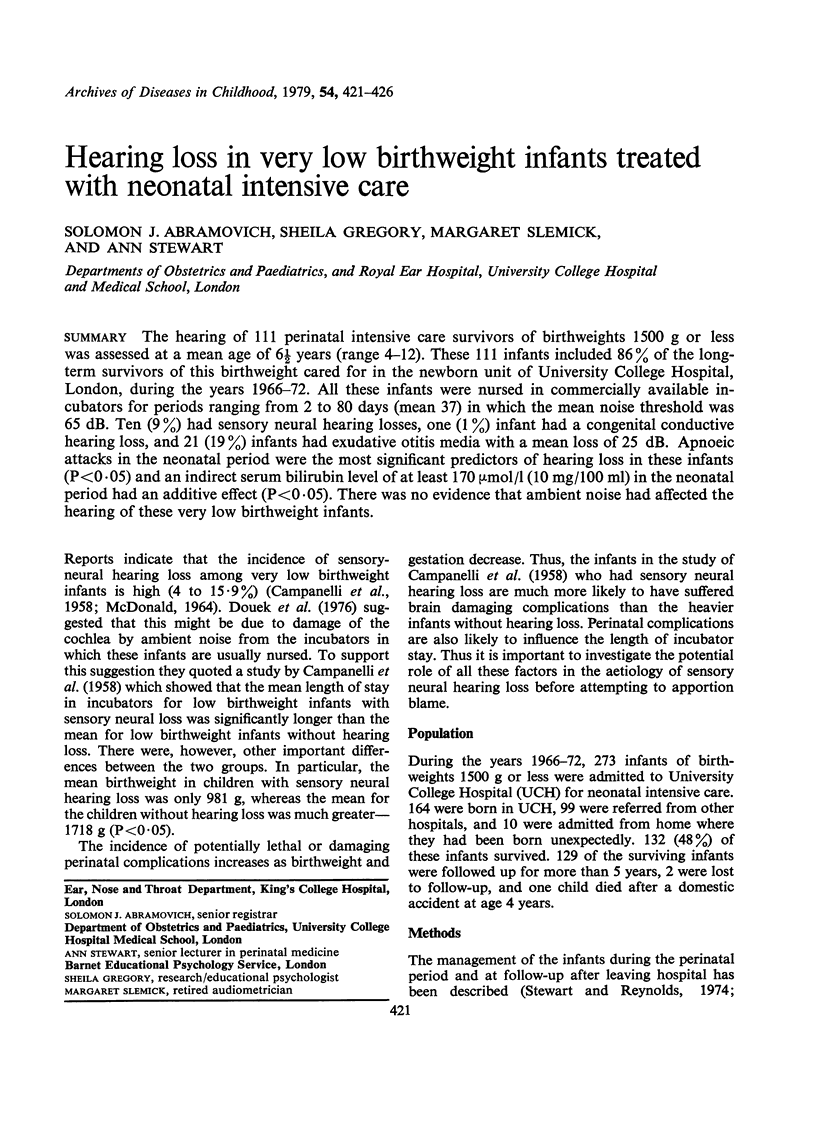
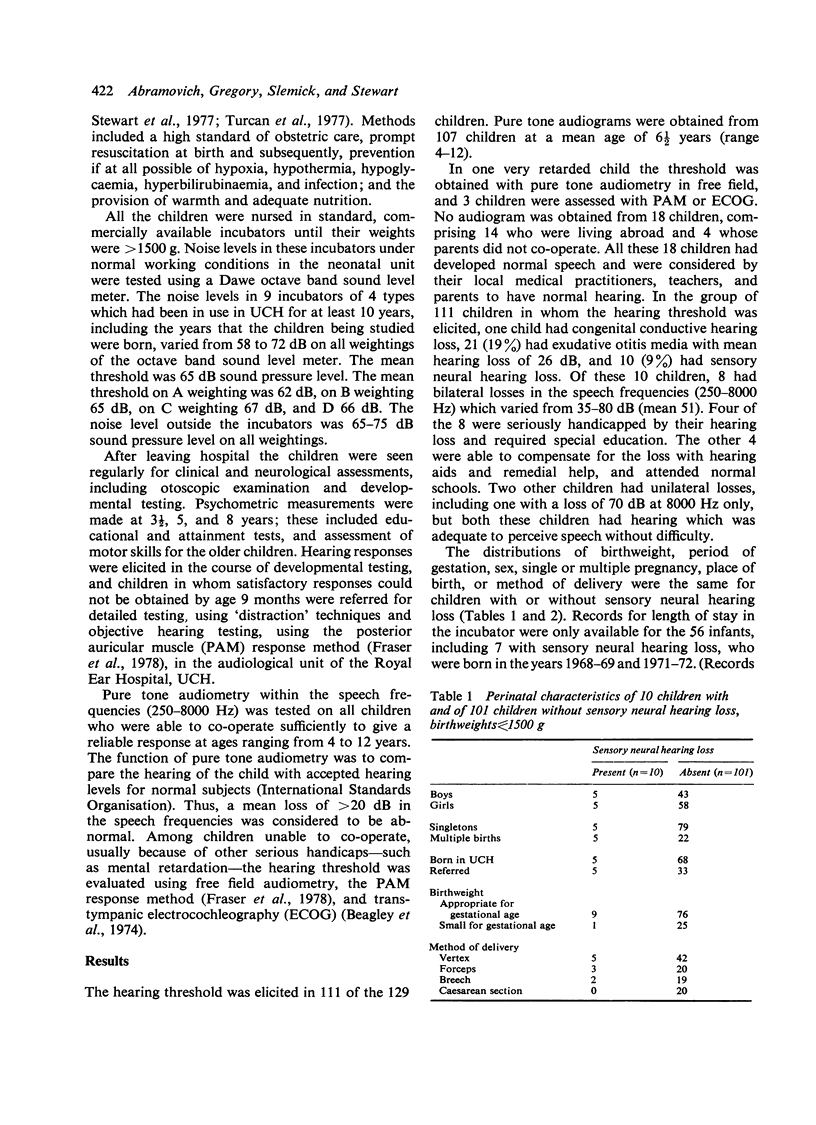
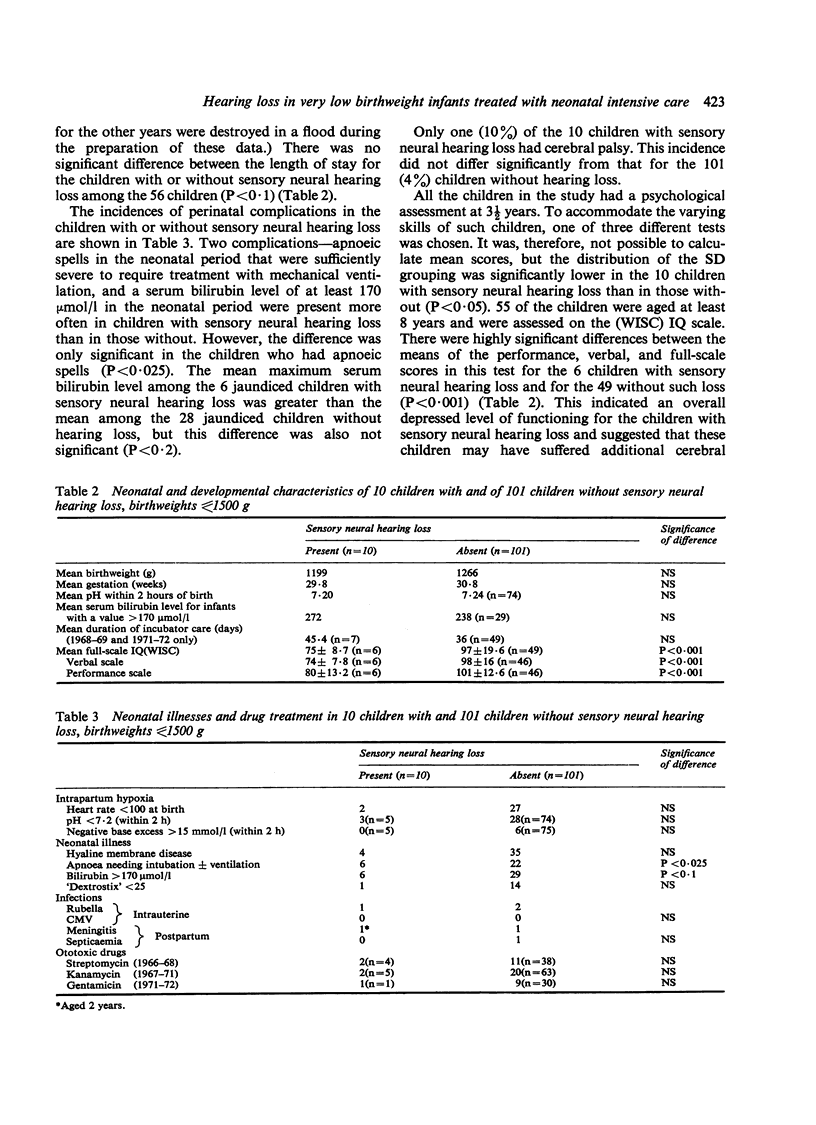
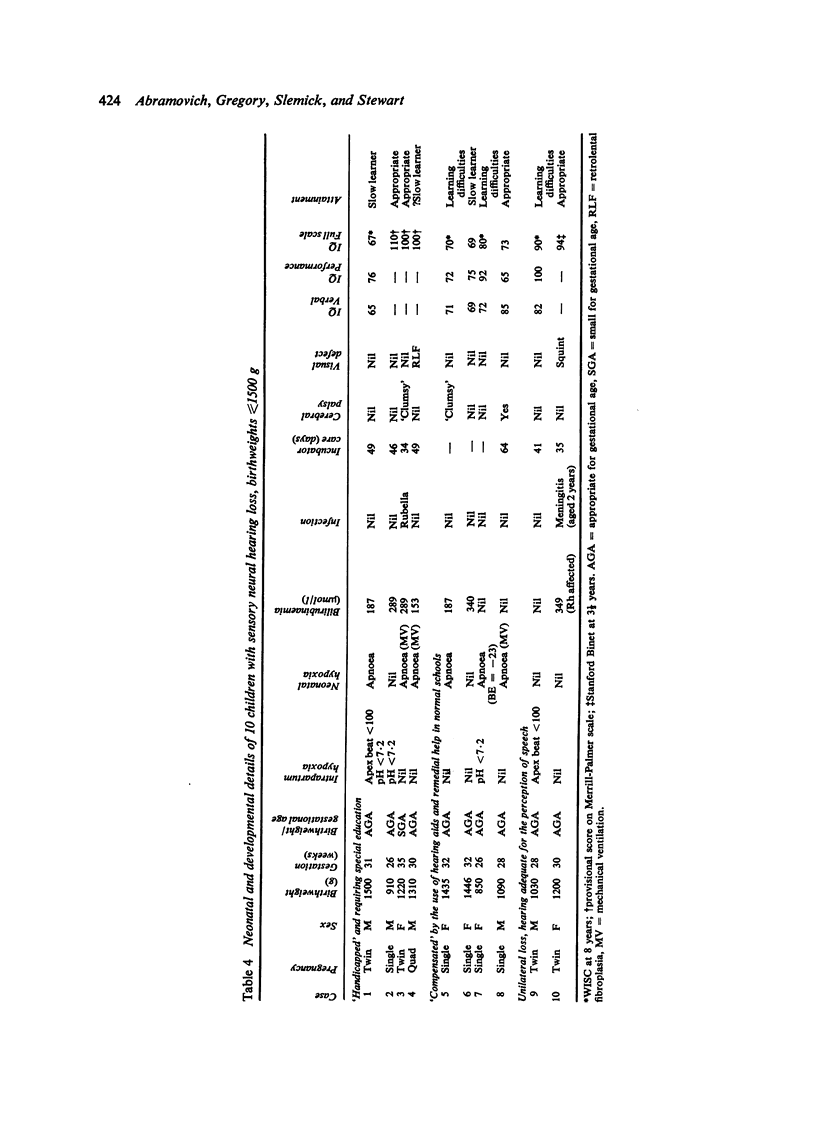
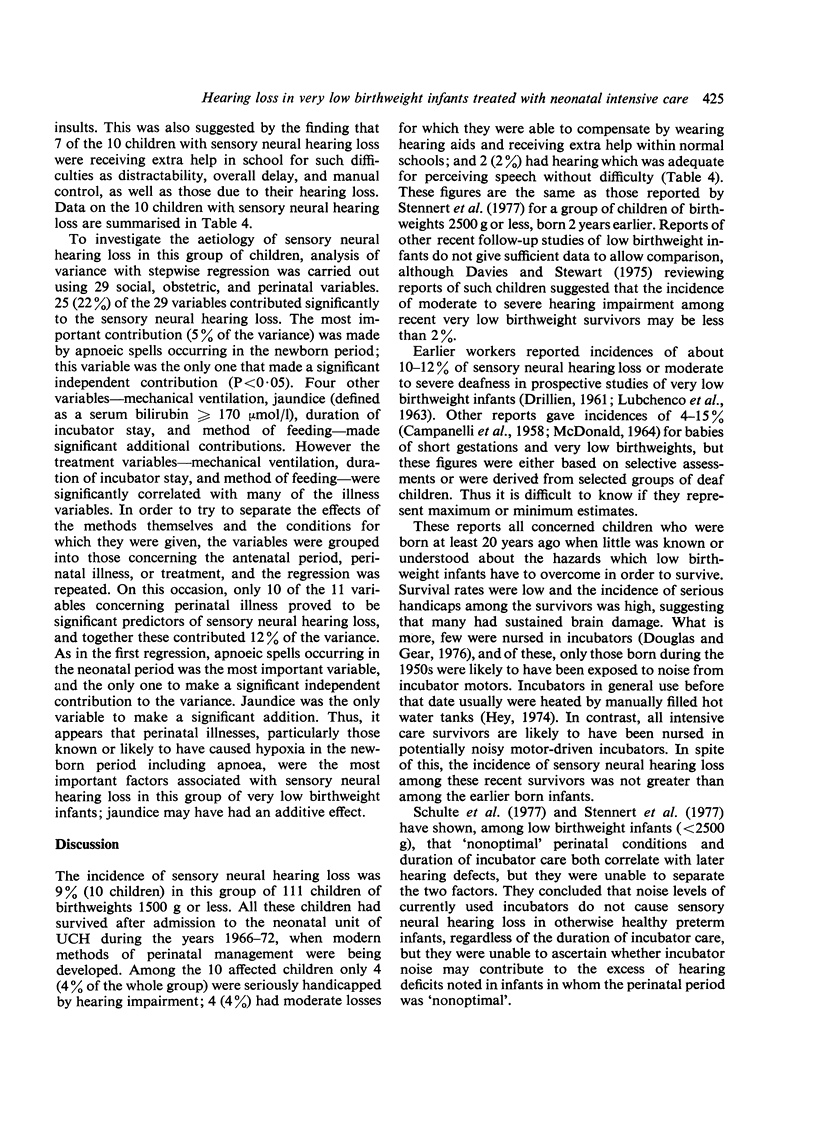
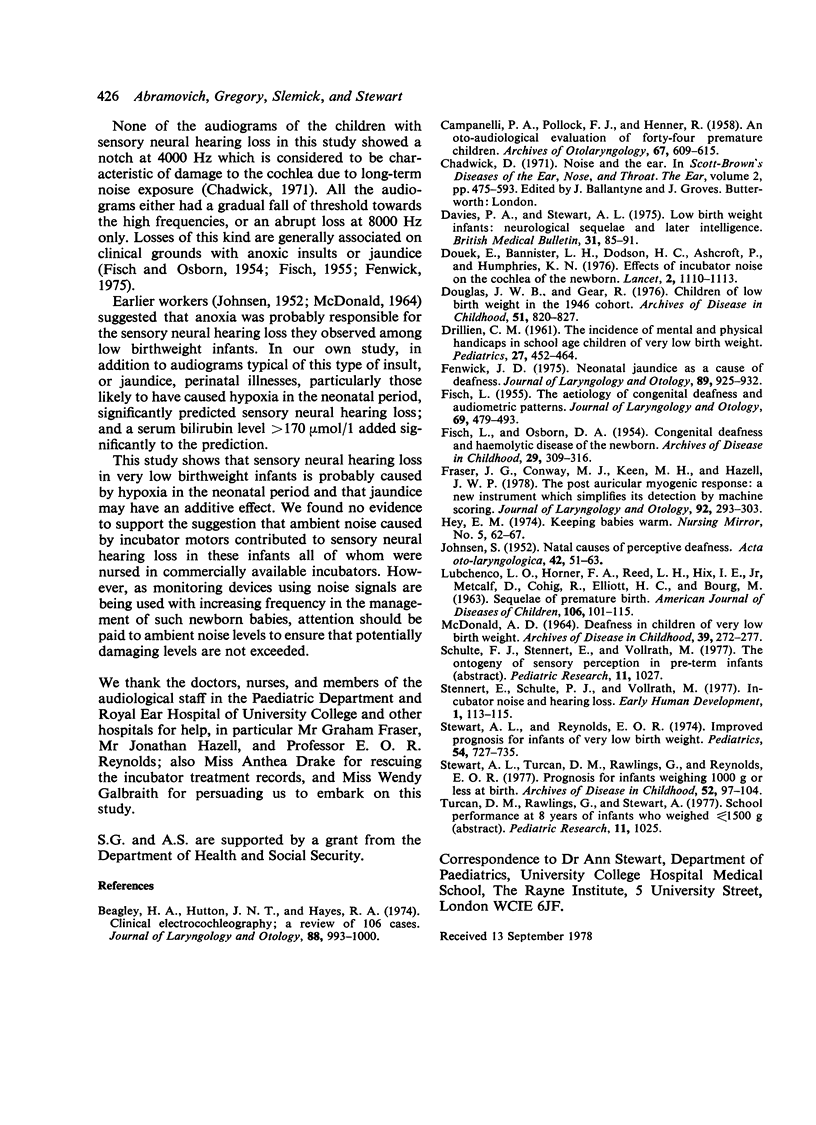
Selected References
These references are in PubMed. This may not be the complete list of references from this article.
- Beagley H. A., Hutton J. N., Hayes R. A. Clinical electro-cochleography: a review of 106 cases. J Laryngol Otol. 1974 Oct;88(10):993–1000. doi: 10.1017/s0022215100079652. [DOI] [PubMed] [Google Scholar]
- CAMPANELLI P. A., POLLOCK F. J., HENNER R. An oto-audiological evaluation of forty-four premature children. AMA Arch Otolaryngol. 1958 May;67(5):609–615. doi: 10.1001/archotol.1958.00730010623020. [DOI] [PubMed] [Google Scholar]
- DRILLIEN C. M. The incidence of mental and physical handicaps in school-age children of very low birth weight. Pediatrics. 1961 Mar;27:452–464. [PubMed] [Google Scholar]
- Davies P. A., Stewart A. L. Low-birth-weight infants: neurological sequelae and later intelligence. Br Med Bull. 1975 Jan;31(1):85–91. doi: 10.1093/oxfordjournals.bmb.a071248. [DOI] [PubMed] [Google Scholar]
- Douek E., Dodson H. C., Bannister L. H., Ashcroft P., Humphries K. N. Effects of incubator noise on the cochlea of the newborn. Lancet. 1976 Nov 20;2(7995):1110–1113. doi: 10.1016/s0140-6736(76)91088-6. [DOI] [PubMed] [Google Scholar]
- Douglas J. W., Gear R. Children of low birthweight in the 1946 national cohort. Behaviour and educational achievement in adolescence. Arch Dis Child. 1976 Nov;51(11):820–827. doi: 10.1136/adc.51.11.820. [DOI] [PMC free article] [PubMed] [Google Scholar]
- FISCH L., OSBORN D. A. Congenital deafness and haemolytic disease of the newborn. Arch Dis Child. 1954 Aug;29(146):309–316. doi: 10.1136/adc.29.146.309. [DOI] [PMC free article] [PubMed] [Google Scholar]
- FISCH L. The aetiology of congenital deafness and audiometric patterns. J Laryngol Otol. 1955 Jul;69(7):479–493. doi: 10.1017/s0022215100050969. [DOI] [PubMed] [Google Scholar]
- Fenwick J. D. Neonatal jaundice as a cause of deafness. J Laryngol Otol. 1975 Sep;89(9):925–932. doi: 10.1017/s0022215100081202. [DOI] [PubMed] [Google Scholar]
- Fraser J. G., Conway M. J., Keene M. H., Hazell J. W. The post-auricular myogenic response: a new instrument which simplifies its detection by machine scoring. J Laryngol Otol. 1978 Apr;92(4):293–303. [PubMed] [Google Scholar]
- JOHNSEN S. Natal causes of perceptive deafness. Acta Otolaryngol. 1952;42(1-2):51–63. doi: 10.3109/00016485209120326. [DOI] [PubMed] [Google Scholar]
- LUBCHENCO L. O., HORNER F. A., REED L. H., HIX I. E., Jr, METCALF D., COHIG R., ELLIOTT H. C., BOURG M. Sequelae of premature birth. Evaluation of premature infants of low birth weights at ten years of age. Am J Dis Child. 1963 Jul;106:101–115. [PubMed] [Google Scholar]
- MCDONALD A. D. DEAFNESS IN CHILDREN OF VERY LOW BIRTH WEIGHT. Arch Dis Child. 1964 Jun;39:272–277. doi: 10.1136/adc.39.205.272. [DOI] [PMC free article] [PubMed] [Google Scholar]
- Stennert E., Schulte F. J., Vollrath M. Incubator noise and hearing loss. Early Hum Dev. 1977 Oct;1(1):113–115. doi: 10.1016/0378-3782(77)90035-4. [DOI] [PubMed] [Google Scholar]
- Stewart A. L., Reynolds E. O. Improved prognosis for infants of very low birthweight. Pediatrics. 1974 Dec;54(6):724–735. [PubMed] [Google Scholar]
- Stewart A. L., Turcan D. M., Rawlings G., Reynolds E. O. Prognosis for infants weighing 1000 g or less at birth. Arch Dis Child. 1977 Feb;52(2):97–104. doi: 10.1136/adc.52.2.97. [DOI] [PMC free article] [PubMed] [Google Scholar]


